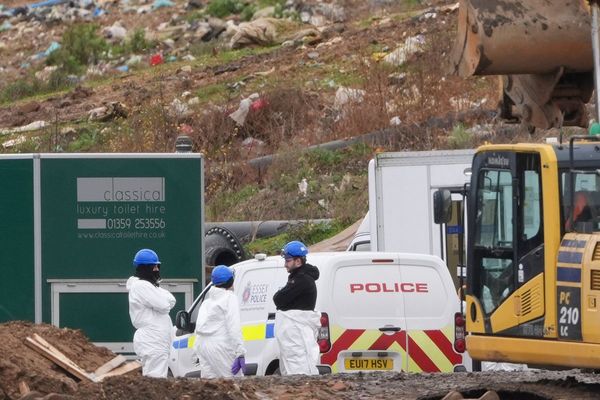WASHINGTON _ Bad news for the West: Even after firefighters have already battled 101 large blazes this year, the remainder of wildfire season is expected to be hotter and drier than normal, virtually assuring there will be more destruction ahead, scientists for the National Oceanic and Atmospheric Administration said Thursday.
NOAA's forecast comes as monitoring stations in Northern California show that grasses, brush and other fire "fuels" are reaching record-dry levels, following a July that was the state's hottest month on record. There's also a chance that strong "Diablo winds" _ like those that fanned the deadly fires last fall in Sonoma and other counties _ could return in coming months.
"During August we typically don't see those events, but they can return in the September and October time frame," said Tim Brown, director of NOAA's Western Region Climate Center in Reno, Nev.
Diablo winds refer to a wind from the northeast that compresses and warms as it blows over ridge tops and down slopes. Suburban homeowners can partially protect themselves in advance by clearing brush and dead limbs from around houses. Authorities say they should also pay attention to wind forecasts, avoiding yard work _ which can ignite sparks _ during strong winds.
As of Thursday, there were eight major fires burning in California, including the 364,000-acre Mendocino Complex blaze, the largest wildfire in California history, according to the National Interagency Fire Center. More than 80 others were burning nationwide, including 17 in Alaska, 15 in Montana, 13 in Arizona, 11 in Idaho and 9 in Washington state.
The multitude of blazes has renewed debate on the degree that global climate change is intensifying the West's natural patterns of drought and fire. In a recent commentary, three leading climate and fire scientists _ Daniel Swain, Crystal Kolden and John Abatzoglou _ called climate change a "threat multiplier" that has lengthened the fire season and contributed to more-explosive blazes.
The interior secretary rejected the climate change link.
"This has nothing to do with climate change," Interior Secretary Ryan Zinke told KQED on Sunday, referring to California's recent wildfires. "This has to do with active forest management."
Yet several of the West's most destructive recent blazes have occurred in places where forest management doesn't occur. These include the Tubbs fire in Sonoma and Napa counties last year, which raged through suburbs and oak grasslands, as opposed to forests where land managers have the option of thinning trees and brush.
NOAA scientists did not use the term "climate change," in a briefing with reporters Thursday, but they presented data that documents the trend. A chart they shared showed how overnight low temperatures in California during July have markedly risen since the year 2000.
For firefighters in the West, nighttime offers a chance to contain and extinguish fires, because humidity levels generally rise then, making "fuels" less flammable.
"But if nighttime stays warm and humidity stays low, then fire behavior can continue at pretty high levels," Brown said. "This can lead to longer fires and more smoke production.
"During the last couple of decades, this trend has really taken off," he added.
NOAA forecasters said they expect abnormally warm, dry conditions to linger this year into October and November _ not just in California but the Pacific Northwest and the northern Rockies.
Much of the Southwest will be helped by a seasonal "monsoon" that will increase rainfall over Arizona and New Mexico, they said.
Starting this winter, a weak to moderate El Nino is expected to develop in the Pacific, potentially increasing rainfall in California, particularly Southern California, said Dan Collins, seasonal forecaster for the NOAA's Climate Prediction Center in College Park, Md.
El Ninos are caused by bands of warm water in the Pacific. Often, but not always, they cause heavy winter rains in Southern California. Such storms can trigger mudslides, particularly in areas that have recently burned, leaving behind bare soil.
According to NOAA, California recorded its warmest month on record in July, based on 124 years of data. The state recorded an average temperature of 79.7 degrees, surpassing the previous record of 79.5 degrees in July 1931. In downtown Sacramento, temperatures hit at least 90 degrees every single day, a record month, according to the National Weather Service.
Using NOAA data, the National Weather Service in Los Angeles reported this week that, for the entire United States, May through July was the hottest three-month period of its kind in recorded history.







